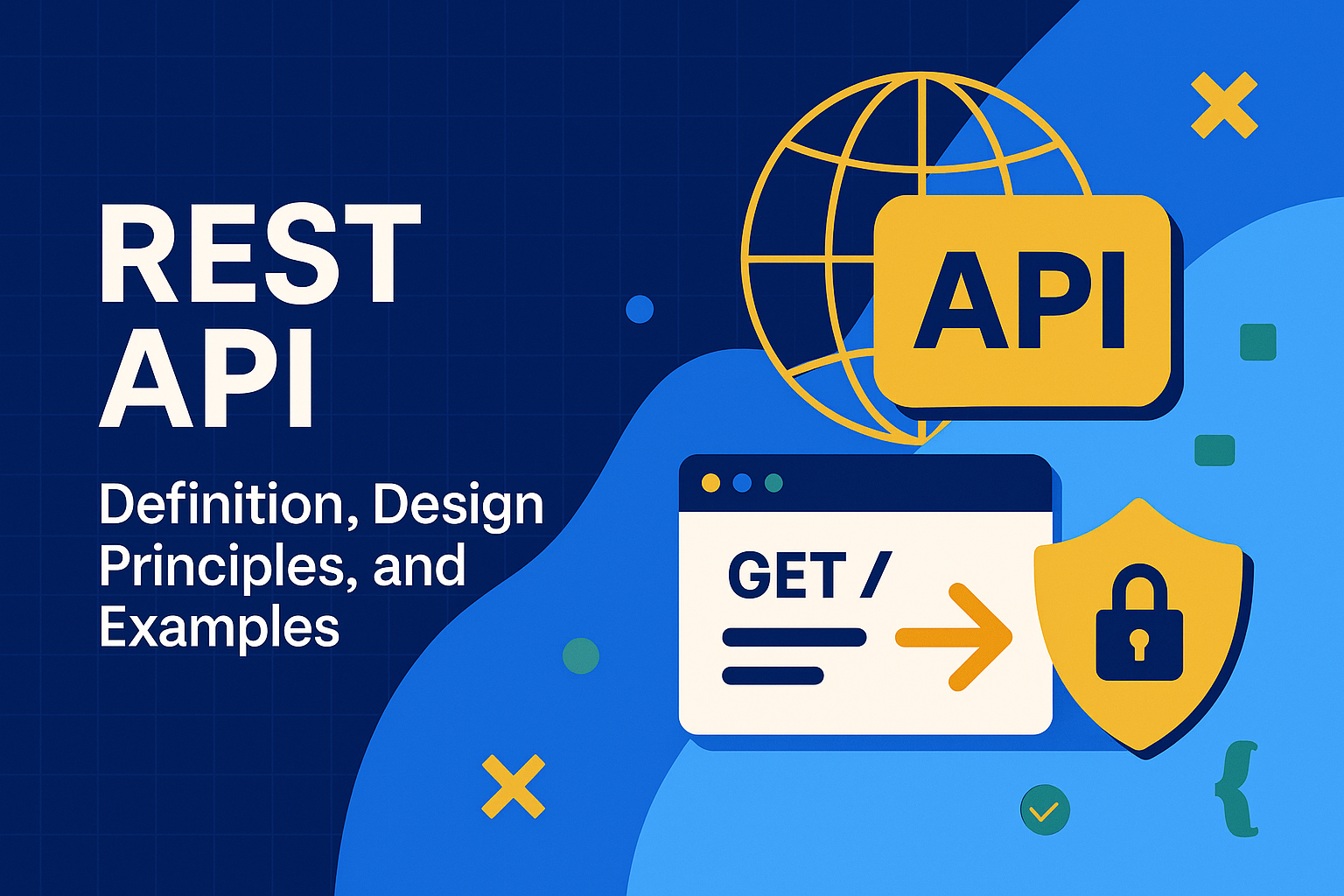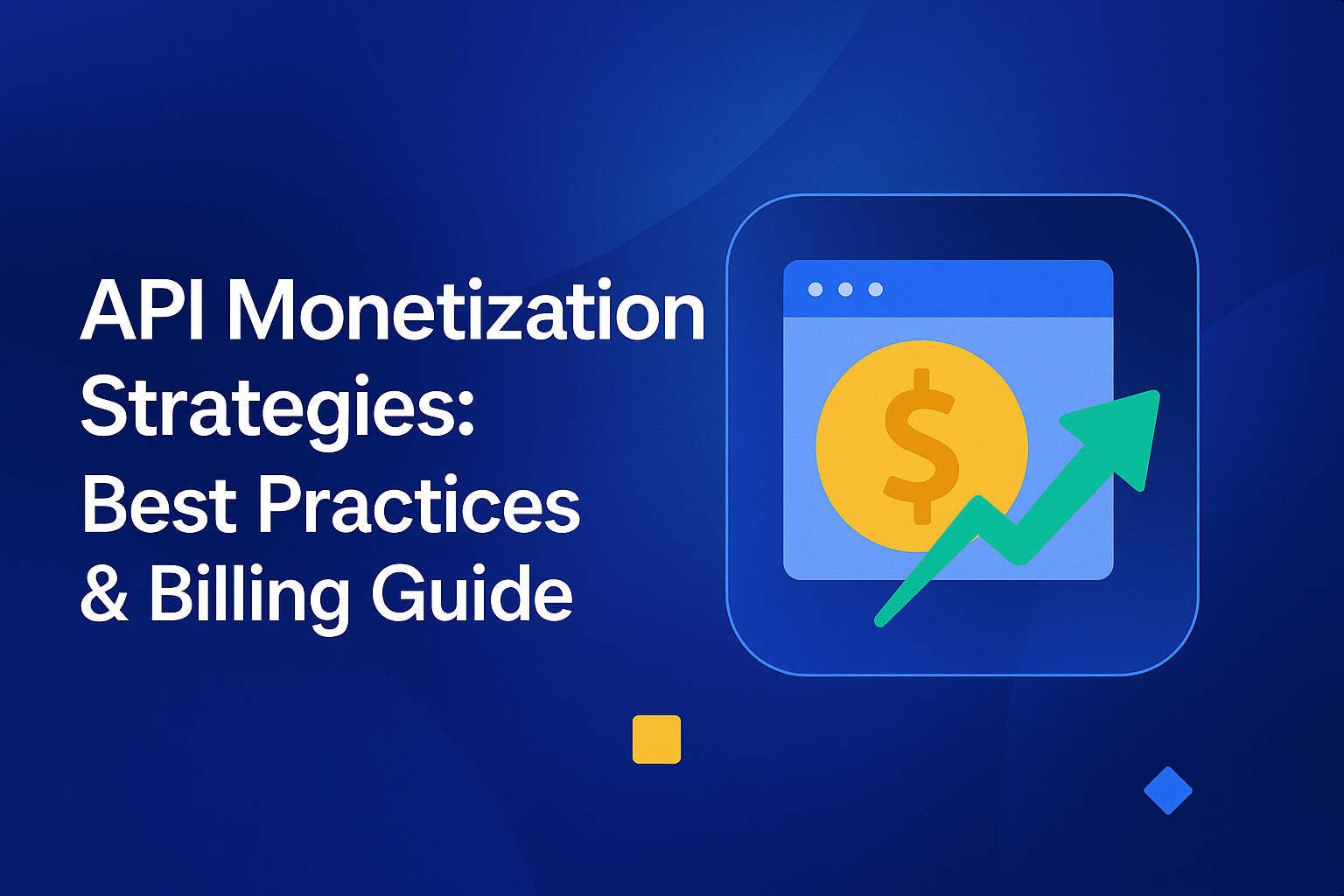
Modern systems don’t just rely on API design to make data accessible, they also depend on it for communication. Without clear structure, such as undocumented paths or inconsistent behavior, things break quickly and small failures can lead to cascading effects. This is where REST APIs help.
REST (Representational State Transfer) supports design decisions that hold up as usage grows. It brings order to the chaos with standard HTTP protocols and resource-based URLs. This makes interactions predictable and lays the foundation for scalable services.
This guide breaks down how REST APIs work, what makes them dependable, and how to apply their core principles.
Key takeaways
- Every REST endpoint you publish becomes a long-term dependency for someone else’s system.
- Stateless calls reduce cross-service friction and make retries safer under unpredictable load.
- Predictable URL structures reflect domain thinking, not just routing convenience.
- Consistent method usage prevents confusion when teams debug or extend your service contracts.
- Without caching headers, performance bottlenecks surface in places that are harder to trace.
- REST is most valuable when you apply its rules before systems start scaling under pressure.
What is a REST API?
REST API is a type of application programming interface that follows the REST architecture’s design rules. It uses HTTP methods and clearly defined URLs to perform read, write, update, and delete actions on resources between distributed systems.
REST APIs are used in systems that require reliable communication between loosely connected services. Their structure supports cross-platform development without shared runtime dependencies. It makes them a common choice for mobile apps, web platforms, and service-based architectures.
How does the REST API work?
REST APIs work by linking specific actions to stable, well-defined resource URLs. When a client sends a request, it reaches the server with clear intent, and the server answers using rules that remain the same across environments. That structure reduces ambiguity when systems expand or shift.
There’s no shared memory between requests. Each one arrives on its own, carrying everything the server needs to complete the task. This makes retry logic cleaner and helps services operate without coordination. It also prevents hidden dependencies from forming between layers that shouldn’t know about each other.
The four core HTTP methods define how actions are handled:
- GET reads the current state of a resource
- POST creates a new resource within a collection
- PUT updates or replaces a resource using full context
- DELETE removes a resource permanently
The RESTful API principles
REST applies constraints to how systems expose and exchange data. These aren’t style preferences or implementation tricks. They’re structural rules that shape the way APIs behave across teams, tools, and time.
Six core principles define whether your API actually follows REST:
1. Statelessness
A stateless system doesn’t keep track of past requests. Every call from the client must include all the information needed to process it. The server doesn’t store session data, which makes it easier to distribute traffic and recover from failure.
- Requests remain independent, reducing coupling between layers
- Failures are easier to isolate and repeat for testing
- Load balancing becomes more predictable under real-world conditions
2. Client-server separation
A RESTful system draws a clear line between the frontend and the backend. The client never reaches into how the server stores data or runs logic. It just sends requests, receives responses, and builds the experience around that exchange.
That clarity keeps things manageable when parts of the system change at different speeds. If the server scales out or switches technology, the interface doesn’t need to be rebuilt. If the interface changes, backend teams don’t have to refactor anything underneath it.
3. Uniform interface
Uniform interface means you stick to the same structure across every service you expose. Clients don’t need special instructions for each one, they already know how to find resources, what methods to call, and what to expect in return.
You’re giving them a system where behaviour doesn’t change from one endpoint to the next. That’s what keeps your API from turning into a collection of exceptions. It’s not about making things simple.
4. Cacheability
A REST API should make it clear when a response can be cached and for how long. That information helps clients avoid repeating the same requests unnecessarily. When used properly, caching improves speed, lowers backend strain, and reduces the number of moving parts involved in every call.
It also creates a buffer that holds up better under load. But only if the rules are clear and the responses stay reliable.
5. Layered system
A layered system keeps responsibilities separate between the parts that receive, process, and forward requests. The client sends a call but doesn’t know what sits between it and the service that handles it.
That structure makes routing more flexible, but only works if every layer follows the same contract. Once one layer rewrites or reshapes a call, things break where they’re hardest to debug.
6. Code on demand (optional)
Code on demand lets the server send executable code to the client when needed. That might be a script that helps format a response or handle something locally. It’s rarely used in production because it introduces extra risk and complicates debugging.
But in some cases, sending logic to the edge reduces server load or network cost. It only works if the client knows how to run it safely.
Why should you use REST APIs?
REST is widely used because it works well at scale without becoming hard to manage. The architecture is simple to learn but stable enough to support long-term systems. It suits teams that need reliable data exchange across platforms, without forcing everyone to work inside the same stack or toolset.
These reasons explain why REST fits modern development needs:
1. Simplifies development
Without APIs, developers would need to write a custom communication method for every system they integrate. That approach takes time, breaks easily, and doesn't scale. REST offers a shared structure where different systems exchange data without knowing each other's design.
This common format lets you connect services quickly, avoid fragile custom code, and reuse the same interface across multiple teams, tools, or platforms.
2. Separates interface from system logic
Even if systems use the same format, the work underneath stays messy. APIs remove the need to deal with storage logic, transport details, or encoding quirks. You send a request and get a result.
That layer of abstraction means teams don’t need to agree on everything, they just need to honour the structure. It’s what keeps integration from becoming infrastructure work.
3. Broad adoption across platforms and teams
REST is the most widely adopted API structure used by platforms and teams around the world. You’ll find strong support across languages, tools, and documentation. If you’re stuck, it’s likely someone has solved it before.
That makes hiring easier and onboarding faster. Major platforms rely on REST to expose services, which means developers often meet it early and build around it long-term.
4. Technical benefits
REST supports different data formats, including JSON, XML, and YAML, without needing extra conversion logic. You send what the service expects, and that’s it. There’s no envelope or added structure beyond the request itself.
That simplicity reduces weight across each call, which makes a difference when traffic spikes or services begin handling more than they were originally designed for.
Best practices in designing REST APIs
REST APIs work best when the structure supports clarity, security, and consistent behaviour. Design choices made early often carry long-term impact, especially when systems scale or multiple teams are involved.
The practices below help shape reliable, maintainable REST APIs:
Use clear and accurate HTTP status codes
HTTP status codes are not optional metadata, they tell the client what happened and what to do next. If your API returns 200 for everything, debugging becomes trial and error. Each code reflects a specific outcome and helps tools and teams interpret requests consistently.
The codes below are widely used and should be part of any well-structured REST API response:
- 200 OK – Request completed successfully and returned the expected result
- 400 Bad Request – Request was malformed or missing required fields
- 401 Unauthorized – Client request lacks valid authentication credentials
- 404 Not Found – The requested resource could not be located
- 500 Internal Server Error – A server error occurred while processing the request
- 302 Found – Resource temporarily moved to a different location
Return informative error responses
An error response should help developers identify the issue without reading through logs or guessing. Include details like missing fields, invalid formats, or required authentication. These small signals save hours of back-and-forth and keep client developers moving without internal access or repeated support requests.
Secure API endpoints
APIs must handle unauthorised access, malicious input, and user-level restrictions. Validate incoming data and use authentication for all protected routes. Role-based permissions help control what each user or service can access. Without these controls, internal operations may become exposed or misused without warning.
Version API endpoints
Versioning lets you update your API without breaking existing client integrations. Define version numbers in the URL or request headers. This approach gives teams time to migrate gradually and helps maintain stability across releases. It also reduces support load when older versions remain available during major changes.
Provide clear and detailed API documentation
Good documentation shows how your API works without requiring source access or internal context. Include request examples, response formats, error codes, and authentication rules. Well-documented APIs reduce onboarding time and improve integration accuracy, especially when teams change or services are built around unfamiliar endpoints.
Limit data load with pagination and filters
Returning a full dataset on every request leads to slow responses and higher failure rates. Pagination keeps the load predictable, even as records grow. Filters narrow the result set before processing begins. Both techniques help APIs respond faster and avoid memory issues that appear when traffic increases or large tables are queried without limits.
Use resource names in URL paths
Endpoints should reflect the resource being accessed, not the action performed. HTTP methods already define what happens, there’s no need to repeat that in the URL. Paths like /orders or /users/45 are easier to read and maintain. It keeps the interface clean and consistent, especially as the API grows across multiple services or teams.
REST API examples
REST APIs are used across services that need to share functionality with other systems or external developers. The examples below show how major platforms expose features using REST.
Below are a few notable REST API examples:
REST API examples
DigitalAPI
DigitalAPI offers REST endpoints for managing workflows, data sync, and app operations across teams. Each service maps to a resource path, and calls use standard verbs. It’s built to support automation and structured control inside real-world enterprise setups.
Zuplo
Zuplo serves as a programmable API gateway with REST endpoints for features like request transformation, authentication, and rate limiting. It supports JSON payloads and quick setup. And it also allows developers to deploy edge policies with minimal code and configuration.
Axway
Axway’s platform offers REST APIs to manage secure file transfer, proxies, and policy-driven traffic. Developers interact with resource-based URLs under enterprise-grade authentication rules. Its API ecosystem supports consistent behaviour across environments while delivering observability and control.
How to measure REST API quality
REST API quality is measured by how it performs under real-world use. It should return the right data, handle errors properly, and remain stable over time.
The points below highlight key areas to evaluate:
- Response Time: Keep an eye on how fast endpoints respond in real conditions. For typical GET calls, anything consistently above 200 milliseconds should be flagged and investigated.
- Error Rate: If more than 1% of your requests fail, that’s a sign of instability. Log each 500-level response and trace it back to the source, not just the symptom.
- Throughput: A stable API should comfortably handle 15–20 requests per second without slowing down. Spike tests will show how much room you have before it cracks.
- Uptime: Track availability in real time, not just in monthly reports. If you're dipping below 99.9%, that’s downtime your users can feel, especially during critical hours.
- Cache Hit Ratio: When cache hit rates fall under 80%, it usually means your system is pulling fresh data too often. That adds load you could’ve avoided entirely.
- Timeout Rate: A timeout rate above 0.5% often points to bottlenecks inside your service. Watch for queue delays, blocking processes, or under-provisioned database calls.
Have seamless integration through Digital API’s RESTful API
Designing and maintaining a reliable REST API requires more than structural choices. It demands consistency, predictable responses, and thoughtful scaling. When done right, REST enables systems to work together across teams and platforms without confusion.
DigitalAPI.ai offers a RESTful API framework designed for seamless integration across services. Its structure aligns with core REST principles which makes it easier to connect tools, automate workflows, and scale without rework. Teams can rely on predictable behaviour while extending functionality across internal and external systems.
Frequently Asked Questions (FAQs)
1. What is the difference between REST API and SOAP?
REST uses standard web calls and simpler formatting, which makes it easier to use and debug. SOAP is more rigid, with strict XML rules that add complexity most systems don’t need today.
2. What is a REST API example?
DigitalAPI is a REST API that uses standard HTTP methods to expose endpoints for integration. Developers can send structured requests to access or manage services without handling the backend logic directly.
3. Is REST API secure?
Yes, REST API is secure when built with proper safeguards. Use HTTPS, authentication tokens, input validation, and access control to prevent misuse and protect sensitive data during transmission.
4. How to learn REST API as a beginner?
Start with basic HTTP concepts, like what GET and POST actually do. Then try calling simple public APIs using Postman. Seeing a real response makes it easier to understand how endpoints, status codes, and payloads all fit together.
5. What is HATEOAS in REST?
HATEOAS lets an API include links inside its responses, showing the client what to do next. It removes the need to hardcode paths and helps the interface stay flexible when services evolve or rules change.
You’ve spent years battling your API problem. Give us 60 minutes to show you the solution.
.svg)

%20(1).png)





